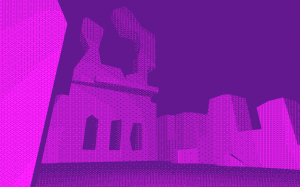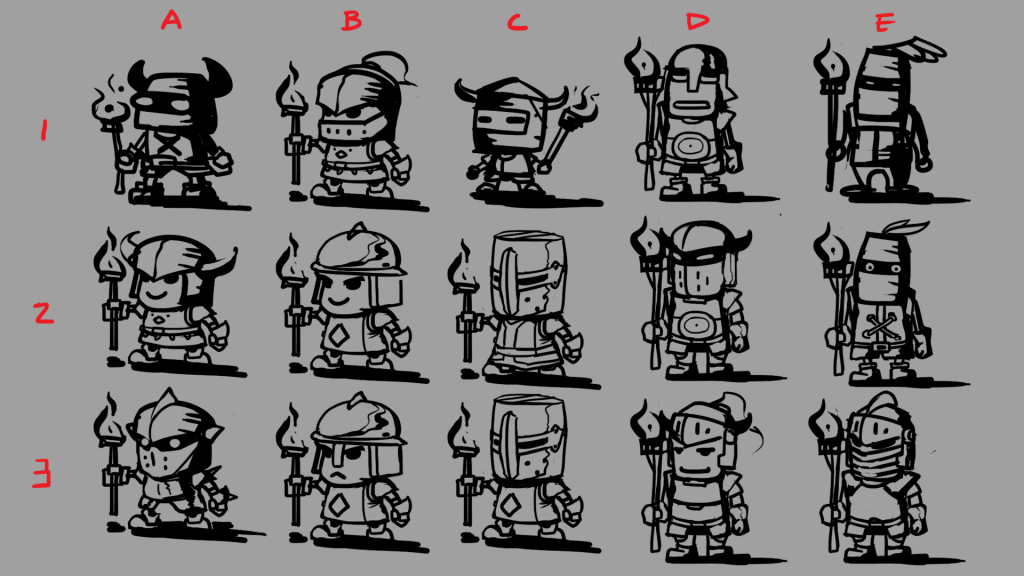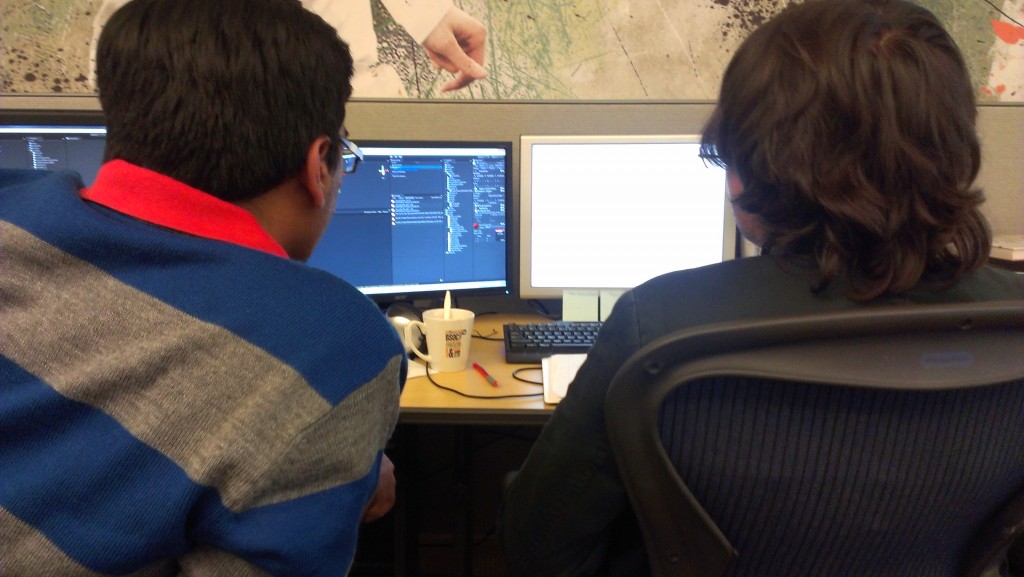Another game we looked at while doing research for Torch was At A Distance by Terry Cavanagh. It’s a two-player, two-screen puzzle game that’s free online and doesn’t take very long to play. The players move around two separate spaces in this game, but they really do have to work together to proceed. Figuring out exactly how they work together is the heart of the experience. Where Artemis was an Information Filtering game, we categorize this as a Divided Information game where each player has a piece of the puzzle and they have to fit them together.
At A Distance isn’t a perfect model for us to follow though. The players solve the puzzle together, but it’s actually hard to communicate verbally about what they are seeing – the designer recommends a set-up with the two screens side-by-side so that both players can see both screens, and this is a very different cooperative experience than the one we are creating. The game also requires some simple 3D platforming which, while not always bad, isn’t ideal for an audience that includes non-gamers. Finally, the instruction-less puzzle experience, while fine for At A Distance, is not the right approach for us. We weren’t even sure when the game ended, and those moments of confusion at the end of the experience are not what we want to leave the press with.
So we came away from this game certain that our design needed a clear beginning with a clear objective, and a clear ending rewarding the player for finishing the experience. We also are leaning more and more toward 2D controls and navigation, which may be easier for our audience to grasp.
Screenshot from At A Distance main site here.



